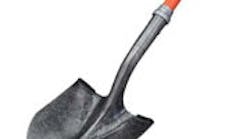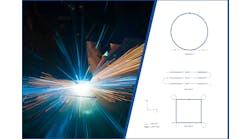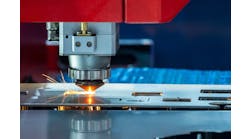Milwaukee-based Bucyrus (www.bucyrus.com) designed and built the steam-powered shovels that dug the Panama Canal. Its power shovels, tipping the scales at some 1,400 metric tons, are used to dig much of the iron ore that is used by steelmakers, providing challenges unparalleled in other manufacturing venues.
Mine operators are risk-averse, especially technologically, due to the combination of physical and financial challenges. Historically, electromechanical mining shovels comprising wire rope and gears have had higher reliability and efficiency than the more mobile electrohydraulic units. However, hydraulic technology's potential to reduce necessary maintenance and make it more predictable, lower shock loading on the boom and the machine and improve safety by decreasing employee exposure to heights and weather risks piqued Bucyrus' interest.
The mining equipment builder took a new approach to the modern electric shovel's crowd function, which pushes the bucket into the blasted rock in the bucket-loading cycle. "We looked at the entire system," says Joseph Helfrich, vice president of engineering at Bucyrus. "We didn't want to sacrifice the reliability of electrics in making the move. Our out-of-the-box approach brought together many best practices found in other industries, but not seen in mobile equipment, particularly in mining. After four years and two prototypes, we were successful."
Bucyrus' HydraCrowd replaces a complex, maintenance-intensive wire rope and gear mechanism with a hydraulic cylinder on the business end of the shovel. Fully enclosing the cylinder to buffer against the mine's harsh environment and for structural strength was the first step. And the rod is coated using the high-velocity oxygen fuel thermal-spray process (HVOF) for greater abrasion resistance than conventional chrome-plated steel. Bucyrus expects a six-year life for the cylinder.
[pullquote]The massive cylinder has 125-ton thrust, but it's how Bucyrus finesses the control side that's the key to HydroCrowd's success, as well as several granted and pending U.S. patents. "We use longer-life Rexroth-A2FO fixed-displacement hydraulic pumps driven by variable-speed electric motors," explains Helfrich. "Their marriage to insulated-gate bipolar transistors (IGBT) draws on Bucyrus' long relationship with Siemens. IGBT provides high efficiency and fast switching, with system response of several hundred milliseconds. The system's coupled with AccessDirect, which allows complete, secure diagnostic and troubleshooting from anywhere in the world. Indeed, HydraCrowd's instrumentation level is much higher than in conventional shovels and includes contamination monitoring." Moreover, its active logic algorithms monitor the four pumps' performance and attempt to predict pump failure. When it senses that performance of a pump has crossed a threshold, it can take the pump off-line and shift load. This allows continued shovel operation, albeit on a derated basis. "We took the complexity out of the hydraulic side and put it into the electrical circuitry," says Helfrich.
Complementing Bucyrus' instrumentation, power and control sophistication is its commitment to fundamentals—keeping the hydraulic oil clean and cool. The design, which is new to mobile equipment has accommodated thermal expansion, innovative tankage providing long dwell time to precipitate contaminants without high-pressure-side filtration and a kidney filtration loop following.
"Oil cleanliness exceeds values attained through high-pressure filtration," says Helfrich. "And we went the extra mile in engineering manifold design to allow the use of highly reliable, contamination-tolerant, long-life cartridge, instead of spool or valves."
Helfrich says shovel operators in some of the world's toughest conditions, such as Canada's vast oilsands mines, prefer HydraCrowd's speed and precision in loading the mines' fleets of 363-metric-ton-capacity haul trucks, which cost around $5.25 million Canadian per truck.
"We wanted to ensure reliable operation in the extreme cold common to northern Alberta, so we cold-soaked the prototype for four days in -50 °C temperatures," says Helfrich. "The innovative system for warming the hydraulic oil by heating and churning/recirculation was successful. In contrast the other six commercial shovels, both hydraulic and electromechanical, in the pit were unable to operate."




